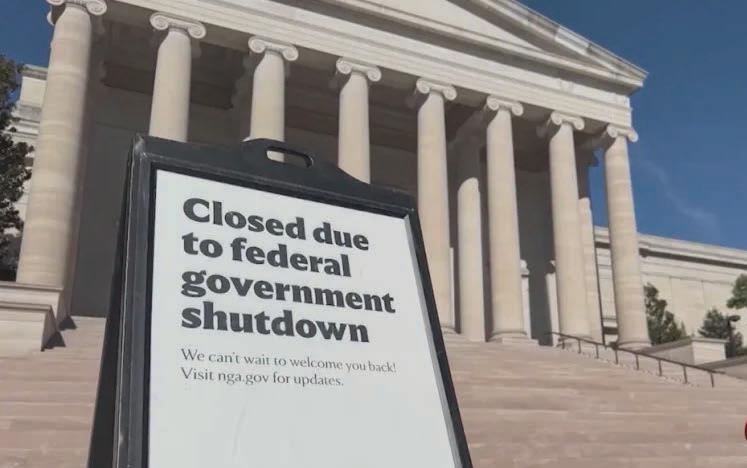
WEDNESDAY, NOVEMBER 12, 2025


WEDNESDAY, NOVEMBER 12, 2025
By John Oliver
Two Grants Pass High School seniors have been selected as recipients of the 2025 Beat the Odds Scholarship, a statewide program that recognizes students who rise above personal hardship to excel academically and contribute meaningfully to their communities. This year’s honorees, Bobby Dishmon and Sophia Rueles, represent the perseverance, leadership, and vision that Stand for Children Oregon and The Renaissance Foundation seek to uplift through this long-standing partnership. Both students faced difficult early childhood experiences yet found their strength in education, mentorship, and community involvement. Their stories highlight how targeted support and opportunities can reshape a young person’s future and reaffirm the purpose behind the scholarship program.
Dishmon’s path began with instability and time spent in foster care. He credits a fifth grade teacher for helping shift the course of his education by encouraging curiosity and confidence in the classroom. At Grants Pass High School, he continued to find stability and purpose through athletics, leadership roles, and community volunteering. His participation in the school’s early childhood education program helped him discover his long-term goal: becoming a teacher who inspires children as his mentors once inspired him. His academic performance, community involvement, and re-

silience led to his selection for the scholarship. Rueles’ story reflects the same determination but follows a different journey. She describes her early circumstances as deeply challenging, with obstacles stacked against her from the start. Rather than letting these hardships dictate her future, she immersed herself fully in her high school community. She enrolled in college-level courses, joined the marching band as a percussionist, competed on the wrestling team, and sought out opportunities that broadened her interests. A turning point arrived when she attended Vet Camp at
Oregon State University, sparking a passion for animal care. Motivated to help local animals and gain experience, she founded Paws for a Cause, a school club dedicated to supporting the humane society through fundraising and volunteer hours. She now plans to pursue a career as a small animal veterinarian.
Both students were praised by Grants Pass High School AVID teacher Kathy Mathews, who has worked closely with many scholarship recipients over the years. She noted that Dishmon stands out for his grit and maturity, and that Rueles distinguishes herself with an
eagerness for academic rigor and a genuine desire to expand her knowledge. Their achievements reflect qualities the scholarship seeks to recognize: perseverance, leadership, and the ability to thrive despite adversity.
The Beat the Odds Scholarship, established in 2007, provides each recipient up to five thousand dollars per year to support tuition, housing, books, or other education-related expenses. The program was created through a partnership between Stand for Children Oregon and The Renaissance Foundation, with the goal of assisting first-generation students who have overcome hardship and who demonstrate strong academic commitment. Beyond financial support, recipients gain access to ongoing resources, scholar events, and a growing support network through the Renaissance Scholars Program.
Stand for Children Oregon plays a central role in educational equity across the state, with a history of advocating for research-based programs that improve outcomes for students. The organization helped pass Measure 98 in 2016, securing annual funding to support career and technical education, dropout prevention, and college readiness. Programs funded through Measure 98 have shown strong results, including a graduation rate of ninety-eight percent among students who complete two or more career and technical edu-
• see SENIORS, page 5
By John Oliver
The Portland Veterans Day Parade did not take place yesterday, marking the third cancellation in six years for what had long been considered one of the city’s most recognizable tributes to military service. Organizers confirmed ahead of the holiday that the parade would not move forward for 2025, with hopes now centered on restoring the event in 2026 after working through the challenges that have repeatedly halted the celebration.
This latest cancellation added another interruption to a parade that has struggled to regain momentum since the COVID era. The event was first canceled in 2020 when the pandemic shut down public gatherings across the state. The following year brought new obstacles when organizers were unable to secure the sponsorships required to cover planning, security and infrastructure costs. After returning in limited form in 2022 and 2023, the parade again fell off the calendar, reflecting ongoing difficulties in fundraising, logistics and volunteer coordination.
The Portland Veterans Day Parade had traditionally drawn spectators from across the region, with veterans’ organizations, school marching bands, law enforcement groups and community clubs contributing to a procession through the

Hollywood District. Many viewed it as an annual reminder of the city’s connection to generations of service members. In its absence this year, Portlanders marked Veterans Day through smaller events held by local organizations and community groups, though none matched the scale or visibility of the traditional march.
Organizers evaluating this year’s shutdown noted operational hurdles that could not be resolved in time for a 2025 event. They now plan to use the coming year to rebuild a stable foundation for the parade’s future. That effort includes seeking long term sponsorship commitments, broadening volunteer recruitment and developing a more reliable planning framework capable of surviving
financial or logistical setbacks. Planning for public safety, street closures and reserve staffing remained among the most complicated aspects of the parade, and organizers aim to address those issues early to prevent further disruptions.
The absence of the parade also reflected broader challenges seen across civic events in major cities. Rising operational costs, shifts in volunteerism, fluctuating participation from community partners and economic pressures on nonprofit organizations have made it increasingly difficult to sustain large annual gatherings. Portland’s situation mirrored trends in other regions where parades and long running public traditions have paused or been scaled back while organizers reas-
sessed resources.
As plans move toward a projected 2026 return, local veterans’ groups remained engaged in conversations with parade coordinators. Many of these organizations held their own ceremonies yesterday and emphasized the importance of eventually restoring the parade as a stable, annual tribute. Over the next year, organizers will work to reestablish partnerships and secure the resources needed to support the event in a way that avoids further interruptions.
Portland’s Veterans Day Parade faced significant setbacks once again, but organizers expressed commitment to bringing the event back to its historic standing. With renewed planning efforts underway and an intention to strengthen financial and logistical support, the focus now shifts to building a foundation that will allow the parade to return in 2026 and reclaim its place as one of the region’s most visible acknowledgments of military service.

By John Oliver
The federal government shutdown, now stretching into one of the longest funding lapses in recent history, appears to be approaching a resolution as the House prepares to vote on a Senate-approved funding package. After weeks of halted services, delayed paychecks and growing public frustration, the legislative path forward is finally beginning to take shape. While momentum is building toward reopening the federal government, the final outcome still depends on the House’s ability to act swiftly and President Trump’s willingness to sign the measure into law.
The first major step occurred when the Senate passed a revised stopgap funding bill with bipartisan support. The measure extends government funding for several agencies through January 30, 2026, while providing full-year appropriations for others. This structure is designed to buy Congress more time to negotiate the broader budget battles that have remained unresolved throughout the shutdown. It also reflects a compromise forged through weeks of congressional stalemate and a growing sense of urgency as public pressure mounted.
The House’s role now becomes pivotal. According to multiple sources, lawmakers are expected to return to Washington midweek and could take up the bill as early as Wednesday afternoon. The timing reflects both the compressed legislative schedule and the political necessity of resolving a shutdown that has increasingly strained federal workers, slowed eco-

nomic activity and disrupted services across the country. While the vote is expected soon, procedural hurdles or internal disagreements could still influence the pace of action. Some analysts have cautioned that although the House is planning to move quickly, final approval could still take several days if unexpected disputes arise.
The dynamics in the House are particularly important given the chamber’s narrow partisan divide. House leadership has signaled readiness to advance the Senate bill, but its passage is not assured. Any significant resistance from rank-and-file members could complicate the outcome, especially in a year marked by internal party divisions and political tensions height-

ened by the approaching election season. Still, the pressure to end the shutdown is strong, and many lawmakers appear wary of allowing the crisis to continue.
One of the most closely watched elements of the Senate package is what it does not include. The bill omits an extension of enhanced Affordable Care Act premium subsidies, which has been a contentious point among lawmakers. The absence of this provision reflects broader disagreements over health care policy and federal spending priorities. Whether the issue resurfaces in future negotiations remains to be seen, but for now lawmakers appear focused on resolving the immediate funding lapse.
If the House passes the measure, the shut-
down will not conclude until President Trump signs it into law. The administration has expressed varying views throughout the standoff, and past negotiations have shown that final approval is not guaranteed until the moment the bill reaches the President’s desk. Once signed, federal agencies would begin reopening, workers would return to paid status, and suspended services would resume. However, the country would still be facing another funding deadline early next year, setting the stage for another round of negotiations.
The approaching House vote marks the clearest path toward reopening the government that the nation has seen in weeks. While uncertainty remains, the alignment of Senate approval, House scheduling and public pressure suggests that lawmakers may finally be nearing an agreement. The coming days will determine whether the shutdown ends swiftly or whether political divisions will prolong the disruption. For millions of Americans affected by stalled programs, delayed benefits and closed federal offices, the outcome of this week’s vote will determine how soon normal operations can resume.
The shutdown has underscored the challenges of governing in a polarized political climate and the consequences that arise when Congress fails to meet its basic responsibilities. As the House prepares to act, the country is watching closely for signs that the stalemate is truly ending and that lawmakers are ready to move the government back into full operation.







Tired of doing everything "right" and still feeling exhausted, bloated, and stuck?
At Elysian Women's Wellness, we specialize in helping women 35–55 balance their hormones, heal their metabolism, and lose stubborn weight without crash diets or two-hour workouts.
We use our Metabolic Optimization Method to help you feel like you again.
• Functional & traditional lab work
• Sustainable weight loss
• Hormone-friendly exercise & nutrition
• Expert support & accountability
By John Oliver
County
Commissioner
Chris Barnett has built an entire political identity on the language of free speech, open discussion, and constitutional values. Yet the lived experience of Josephine County residents tells a different story. Barnett’s public statements frame him as a defender of transparency and open dialogue, but the behavior documented across his self-run media pages shows a pattern of silencing criticism, blocking constituents, restricting comments, and pushing a controlled narrative through a web of unregistered social media news pages with no identifiable structure, staff, or accountability.
The contradiction is now unavoidable. Barnett sued the Grants Pass Tribune for allegations that mirror his own documented conduct, claiming the Tribune used false names, spread misinformation, and published deceptive content. The irony is unmistakable because Barnett himself has operated five to six different news pages of his own under vague branding such as Real Live News Oregon, Grants Pass News, Josephine County Tribune, and others. These pages present themselves as platforms for open discussion while hiding comment sections, restricting public participation, blocking critics, and posting under anonymous names while attacking local journalists, including this newspaper and its publisher.
One recent example captures the full scope of the contradiction. Barnett’s Real Live News Oregon page posted a Free Speech Protection Notice claiming the page exists to defend open criticism and fair commentary. The notice framed the page as a hub for public discussion and a home for freelance reporters. But the public quickly noticed that comments had been disabled entirely. The same post condemning suppression of speech had silenced the very public it claimed to welcome. Residents re-

sponded across community groups, pointing out the obvious inconsistency and sharing their own experiences of being blocked across Barnett’s many pages.
One resident wrote that Barnett’s behavior would be considered unbecoming of a noncommissioned officer in uniform and that his conduct on these pages is both disappointing and disgraceful. Another explained that she had been blocked for simply laughing at one of Barnett’s posts. Others pointed out they had never commented on his pages yet were preemptively blocked once they reacted negatively to his content. Some began joking about forming an online group titled “I am blocked by Chris Barnett” because so many share the same experience.
Another resident noted that Barnett’s definition of free speech seems to apply only when the speech supports his agenda. Several users echoed this sentiment, stating that Barnett’s pages are safe zones only for those who agree with him and that any dissent results in immediate removal or blocking.
From page 1
cation courses. Stand for Children also advanced the Early Literacy Success Initiative in 2023, bringing significant investment into statewide literacy programs that support young readers. Together, these efforts channel more than two hundred ten million dollars annually toward targeted educational support.
The Renaissance Foundation contributes by providing long-term scholarship funding and wraparound support for low-income and first-generation college students. Its mission centers on helping students not only reach college but stay enrolled, succeed academically, and move into their careers with confidence. The foundation’s renewable scholarships and support network ensure that students like Dishmon and Rueles have continued guidance throughout their academic journeys.
The 2025 scholarship selections highlight what becomes possible when students gain access to mentors, supportive programs, and opportunities to explore their interests. Dishmon and Rueles will graduate from Grants Pass High School with years of leadership experience, academic achievement, community service, and personal growth behind them. Their stories reflect the strength of local students and the impact that statewide educational initiatives can have when resources reach the classrooms and communities where they are most needed.
As both students prepare for the next chapter of their lives, the Beat the Odds Scholarship acknowledges not only their accomplishments but also the promise of what they will contribute in the years ahead.
pire. A commenter challenged Barnett’s claim that his pages accept freelance submissions by inviting others to test this promise. The commenter provided several public email addresses linked to Barnett, all previously disclosed in public records, and encouraged people to submit articles to see whether Barnett genuinely accepts outside viewpoints. The tone across the thread reflected widespread skepticism, with many doubting that any submissions not aligned with Barnett’s views would ever see the light of day.
Others pointed out the long list of business names associated with Barnett, visible through the state’s corporate registry. The sheer number of entities tied to his name raised questions about what these pages actually are, who they represent, and why none of them appear to have functioning websites, public staff listings, or verifiable operations beyond Facebook posts. Many of the pages are registered in name only,
with no formal business structure, no disclaimers, and no traceable ownership beyond Barnett himself.
This growing conversation among Josephine County residents paints a picture of a commissioner operating his own closed information ecosystem while condemning others for misinformation. The commissioner accusing the Grants Pass Tribune of using false names is the same commissioner posting under a shifting collection of anonymous pseudonyms, including the “Shirleys.” The commissioner insisting on truth is the same commissioner spreading content widely rejected by residents as misleading, or false. The commissioner claiming to champion free speech is the same commissioner disabling comments, removing dissent, and blocking constituents even when they have never posted a comment at all.
Residents increasingly describe Barnett’s conduct as corrosive to public trust. The purpose of public office is to serve the people, yet many now feel that Barnett has weaponized his power to shape narratives, punish critics, and use his influence to act without accountability. The disconnect between what he preaches and what he practices grows wider with each new interaction.
Josephine County is a community that values honesty, transparency, and open civic participation. When an elected official undermines those principles while publicly claiming to defend them, the damage reaches far beyond a simple online disagreement. It strikes at the integrity of the institution’s residents rely on. Barnett’s actions, his pages, his lawsuits, and his attempts to control public discussion reveal a troubling portrait of a leader who is not practicing what he demands of others.
The public sees the contradiction. They are speaking out. And they are no longer willing to be silenced.






By John Oliver
Governor Tina Kotek entered the week with a series of high-impact decisions that have drawn statewide attention, even as many Oregon communities continue to confront their own ongoing challenges. The governor’s actions ranged from emergency transportation funding to ongoing efforts to protect food security, yet the timing and substance of these moves have also prompted debate in counties facing staffing shortages, rising costs, and strained public services.
One of the most significant developments was Kotek’s signature on House Bill 3991, an emergency transportation package designed to stabilize the Oregon Department of Transportation and prevent sweeping layoffs. The bill raises the state gas tax, increases vehicle and title fees, and adjusts cost structures for electric vehicle owners through mileage charges or annual fees. The revenue is projected to restore financial balance over several budget cycles and maintain essential highway and road operations.
Despite passage weeks ago, the governor delayed her signature, which allowed tensions to build among lawmakers and residents who questioned the lack of urgency. With the law

now in effect, opponents have already begun preparing a referendum effort to send portions of the funding and tax increases to the ballot. This leaves the future of the transportation plan uncertain, especially in rural regions that rely heavily on state maintenance to support aging infrastructure. Counties outside of Oregon’s major metropolitan centers have expressed mixed reactions, welcoming the promise of continued road work while bracing for the financial impacts of higher fuel and vehicle costs.
The governor also made national news
for her handling of food assistance programs during federal instability. As the federal government signaled that states may need to reverse recent SNAP benefit payments, Kotek reaffirmed that Oregon residents will keep the benefits already issued. She continued efforts initiated last month by maintaining a statewide food emergency declaration and directing millions in state funds to food banks to prevent shortages for vulnerable households. State agencies have been instructed to continue distributing food support despite the pressure from federal authorities, offering temporary stability for families who depend on monthly benefits.
These actions come at a time when local governments across Oregon face their own strains. Counties continue to deal with rising operating costs, homelessness, public safety staffing gaps, and a lack of stable funding for basic services. Communities in southern Oregon, central Oregon, and the coast are reporting increased pressure on food pantries, law enforcement, and transportation systems. Critics argue that state leaders are focusing heavily on large-scale legislative issues while everyday problems in rural communities grow more severe. Others note that the transporta-
tion package and food security measures are intended to offer at least some relief across the state, even if the benefits will take months or years to fully materialize.
The governor’s office maintains that HB 3991 will prevent immediate transportation cuts and that reinforcing food programs is essential during ongoing federal uncertainty. Yet many local officials and residents remain concerned about the gap between statewide legislation and the realities on the ground. Communities are pushing for clearer timelines, better oversight structures, and more direct support for rural counties that continue to experience compounding challenges.
As Oregon moves into the final weeks of the year, Kotek’s decisions will shape budget priorities, county operations, and household finances. Whether the transportation plan survives a potential referendum and whether food security efforts remain stable through federal negotiations are now central questions for the months ahead. For Oregonians watching closely from communities still struggling with local crises, the week’s developments underscore the growing distance between state-level policymaking and the lived experience in many parts of the state.
By Ellen Ward
Wendy’s, the longtime fast food competitor known for its square burgers and fresh-focused branding, is preparing for a significant contraction of its U.S. restaurant footprint. The company told investors it will begin closing a mid-single-digit percentage of its American locations starting in the fourth quarter of this year, a move that could affect roughly three hundred stores nationwide. While Wendy’s has not released a list of locations slated for closure, the announcement is already prompting speculation about how this strategy may impact markets such as Southern Oregon, where the chain serves a steady but competitive customer base.
The decision comes after months of declining sales and an overall drop in revenue and net income. Wendy’s reported reduced traffic from lower-income consumers who are currently facing high costs for food, fuel and housing. The company acknowledged that some of its restaurants are underperforming to the point of weakening the brand, describing these stores as locations that no longer meet the standard Wendy’s wants to present to customers. In response, Wendy’s is choosing to consolidate resources, close weaker units, and reinvest capital into restaurants that have stronger performance potential.
For Southern Oregon residents, the immediate effects will depend on several factors. Wendy’s has not provided details about how many of its Oregon locations fall into the category of underperforming units. The region includes several Wendy’s restaurants in Grants Pass, Medford, Central Point and surrounding

communities. Most are operated by franchise owners who run multiple restaurants across the Pacific Northwest, and franchisees typically make closure decisions based on local profitability, labor costs and lease terms. If Wendy’s corporate team signals that a location is no longer strategically viable, franchise operators may choose to close it or transfer ownership to another operator who might attempt to revitalize it.
Southern Oregon’s restaurant market has been pressured in recent years by rising operating costs, labor shortages and fluctuating consumer spending. Fast food chains in the region have been competing aggressively for value-driven customers, offering promotions at a time when families are watching their budgets closely. Wendy’s has participated in this competitive landscape with value menus and limited-time items. Still, the region’s smaller population density and increasing
cost of doing business may put certain local locations at higher risk of being evaluated for closure if sales have not kept pace with corporate targets.
The company’s new strategy is part of a broader restructuring effort meant to make the remaining Wendy’s restaurants more appealing through equipment upgrades, technology improvements and streamlined operations. Wendy’s leadership believes that redirecting investment from weaker stores will help strengthen the overall brand. That may ultimately benefit Southern Oregon locations that perform well, as franchise owners could receive additional resources to remodel, modernize or introduce new ordering systems designed to improve service speed and efficiency.
However, the possibility of closures cannot be dismissed. If a Wendy’s restaurant in Southern Oregon is struggling with low traffic or high expenses, it may fall within the range
of stores the company views as nonessential. Some restaurants could face closure if franchisees decide that reinvestment is not financially justified. In other cases, stores might be sold to different operators who believe they can improve performance through better management, targeted marketing or renovations.
For employees, uncertainty is the immediate concern. If local restaurants are affected, workers may face job displacement or reassignment. Wendy’s has indicated that some employees at closing locations could be absorbed into nearby stores, but that depends heavily on staffing needs at those remaining restaurants. In rural regions such as Josephine and Jackson counties, where job mobility is more limited, closures could have a more noticeable impact. For Southern Oregon customers, the most visible changes may come later. If local Wendy’s restaurants remain open, they may benefit from the company’s focus on strengthening the brand with a more modern look and improved quality. If any locations do close, residents may see reduced access to Wendy’s in their immediate neighborhoods, particularly in smaller towns where multiple fast food options are not always available.
Until Wendy’s releases more details, the effects on Southern Oregon remain uncertain. The company has emphasized that closures are only one part of a larger strategy aimed at reversing declining sales and making the chain more competitive. For now, customers and employees across the region will be watching to see whether their local restaurants are strengthened by this shift or placed on the list of stores slated to disappear.

Advertise with The Grants Pass Tribune!
Show
By John Oliver
A recent exchange between recall activist William Minnix and Oregon Republican Party Chair Connie Whelchel highlights an ongoing dispute over the level of institutional support Minnix believes his federal appellate case deserves. At the center of the debate is Minnix’s challenge to how Oregon administers its recall petition process and whether state party leaders should intervene on behalf of a pro se litigant who argues that constitutional rights were violated.
Minnix is appealing his case, Minnix v. Tobias Read, to the United States Court of Appeals for the Ninth Circuit. He contends that the Secretary of State issued a defective cover sheet for a gubernatorial recall petition, a decision he says misled voters, impeded participation, and undercut the constitutional right to seek the removal of an elected official. His filings argue that the alleged error compromised both First and Fourteenth Amendment protections, placing the broader recall process in jeopardy. Minnix maintains that this is not just a matter of state procedure but an issue that carries national implications for how citizens can petition their governments.
In his initial email to the Oregon Republican Party, Minnix asked for assistance with the possibility of an amicus brief prepared by the party’s legal team. He noted that he is not represented by counsel and is pursuing the matter independently. He also stated that he had been contacted by the Republican National Committee’s Protect the Vote division, which informed him that it is reviewing his submission. Minnix framed his request not as a financial appeal but as an effort to ensure that constitutional issues affecting voters across Oregon are properly presented to the appellate court.

The response from Whelchel was firm but cordial. She thanked Minnix for his dedication to election integrity while clarifying that the party is neither structured nor resourced to support independent lawsuits, whether financially or through legal representation. Whelchel emphasized that the party is operated primarily by volunteers whose responsibilities focus on building the organization, coordinating with local county committees, and supporting Republican candidates. She explained that national-level intervention by the Republican National Committee is rare outside of cases where the committee is a direct party or where the matter fits a specific national strategy.
Whelchel noted that the party’s inability to engage legally in Minnix’s case does not reflect a lack of interest but rather the boundaries of the party’s mission. She also pushed back on Minnix’s assertion that the party has failed to support statewide efforts to improve election administration, calling this characterization unfair. She concluded her
message by wishing Minnix success in presenting his case to the court.
Minnix responded by restating that he is not seeking funding and believes the party misunderstood his request. He also stressed that his appeal concerns voter rights and that a ruling in his case could influence future petition processes across Oregon. He asked the party to reconsider its position and maintain focus on the broader constitutional issues at stake.
At present, the Oregon Republican Party has declined to participate in Minnix’s litigation. The case continues toward its next scheduled milestone, with Minnix preparing additional filings ahead of a December hearing in San Francisco. While the party’s stance remains unchanged, Minnix’s appeal advances on the argument that administrative errors by state officials warrant judicial intervention. The question now turns to how the court will interpret the scope of citizen petition rights and whether Oregon’s recall procedures meet constitutional standards.









By Ellen Ward
The world of film and theater is reflecting this week on the passing of Sally Kirkland, the veteran actress whose career spanned stage productions, television dramas and major motion pictures across more than six decades. Kirkland, who appeared alongside some of Hollywood’s most iconic performers and earned an Academy Award nomination for her career-defining performance in the 1987 film Anna, died Tuesday morning at a hospice facility in Palm Springs. She was 84.
Kirkland’s trajectory through the entertainment industry was shaped early by her genuine commitment to the craft of acting. Before she became known for her screen roles, she began her career in modeling, working with a variety of fashion and commercial brands. This early exposure to camera work and performance steadily transitioned into her first appearances on stage, where she gained a reputation for emotional intensity and an ability to command an audience’s attention. Those stage years prepared her for what would become a long and varied screen career.
Her film work included roles alongside industry titans, most notably Paul Newman and Robert Redford in the 1973 classic The Sting. The film’s enormous success placed Kirkland in front of an international audience and marked the beginning of a steady rise through Hollywood’s ranks. She continued to add to her résumé with roles in independent films, major studio projects and a wide range of television work, displaying a versatility that made her a frequent and respected presence across entertainment mediums.
Kirkland’s most celebrated performance came in

Anna, the 1987 drama that brought her widespread critical praise and an Academy Award nomination for Best Actress. Her portrayal of a struggling, aging Czech immigrant actress navigating hardship in New York City resonated deeply with audiences and critics. The role showcased not only her emotional depth but also her ability to convey

vulnerability and resilience in a way that felt authentic and lived in. Many film historians regard Anna as the definitive performance of her career.
Beyond her professional accomplishments, Kirkland was known for her dedication to the arts community. She was a frequent presence in acting workshops, independent theater circles and advocacy groups that supported young performers. Colleagues often noted her enthusiasm for mentoring new talent and her belief that artistic expression could be a powerful force for personal and societal change. She remained active in creative circles well into her later years, continuing to appear in smaller film projects and attending industry events that celebrated independent cinema.
Kirkland’s passing marks the end of a chapter in American film history that bridged the classic Hollywood era and the modern film landscape. Her career reflected a willingness to take risks in both mainstream and independent projects, earning her the admiration of fellow actors, directors and fans who appreciated her commitment to meaningful storytelling. She built a reputation not through blockbuster fame but through consistent, compelling performances that left a lasting impression.
As tributes continue to emerge from across the entertainment community, many are reflecting on the depth and longevity of her work. Her life in film and theater created a legacy defined by passion, resilience and dedication to an art form she never abandoned. Sally Kirkland’s influence will remain woven into the history of American cinema, remembered through the roles she brought to life and the inspiration she offered to generations of performers who followed.











